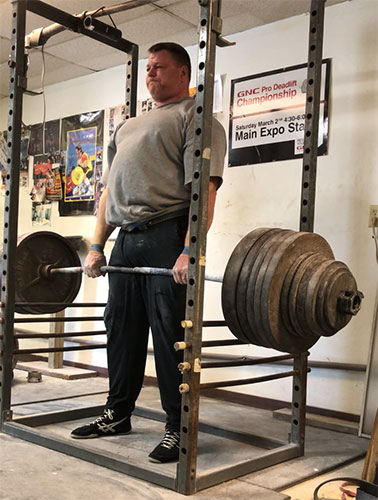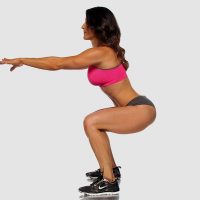Do you ever use partial repetition technique? How do you incorporate partial repetition technique into your training?
My Dad developed a training method during his Green Bay Packer Hall of Fame playing career that primarily consisted of training very heavy in a power rack using partial repetition movements (PRT) at various rack heights in the squat, bench and deadlift. He trained by himself either in the garage or the basement. He developed this system to be able to train heavy without spotters. During training he would complete full range of motion movements with weights that he was comfortable lifting alone, and then utilize his PRT system to maximize his loads. Consequently, his training program for my brothers and I included PRT movements starting at a very young age.
We have continued to include PRT in our training programs for the squat, bench and deadlift throughout our competitive years. PRT allows you to use training weights much heavier than you could lift in a full movement. This also preps your central nervous system to hit those heavy lifts when you go back to full range of motion. I credit the PRT system my Dad started us out with as a major factor in my six IPF World Championship wins. I simply developed a very strong back and posterior chain from all of those years of training PRT squats and deadlifts.
 PRT for Deadlift Training
PRT for Deadlift Training
I have used the PRT method the most consistently in my deadlift training. When I was younger, I consistently used four pin heights by dropping the pulling motion down three inches every two weeks. In recent years, my most common pin height is just above the knee, but at times, I still train several levels below the knee. I typically warm up and then pull progressive singles. I always kept track of my records at each pin height and tried to better those records each training cycle.
With age, my strength has declined. It is not possible to break my old records so I‘ve had to set new goals, but continue to use the same system. I try to achieve these goals progressively during each training cycle.
An important piece of advice on PRT is don’t try to max out every workout; stick with a progressive plan. During the years I was pulling 400 kg (881 lbs.) my record above my knee was 1135 lbs. My body was forced to recruit a lot of muscle fibers pulling those heavy weights.
PRT for Bench & Squat Training
Today, I also include PRT to help strengthen my bench lockout and to overload the squat. I use a similar progressive training system with these two movements. When training bench lockouts, I like to keep the pin height high and train the last 3-6 inches of the movement. I’ve trained PRT squats off and on over the years. When I consistently train PRT squats, I feel they benefit my deadlift strength the most. Recently, I have been training PRT squats more often. I have been chasing one of the Old Man’s > 50 PRT squat records (1260 lbs). I am making progress, but am still a ways off. During his playing career, he would go over 1400 lbs. He would put together 100 lb. bundles of weights that he hung by ropes looped around the inside of the collars. I have never been close to lifting this much weight.
To anyone serious about strength training, I suggest finding a way to add some PRT movements into your workouts. It is a great way to increase strength in a particular range of motion. It can also be a training method that you can add to blast a stagnant bench, squat, or deadlift through a plateau. I don’t think you will be disappointed if you incorporate PRT on a regular basis. I have always known that when my power rack movements are strong my full movement is going to be strong too.
Stay Strong!





